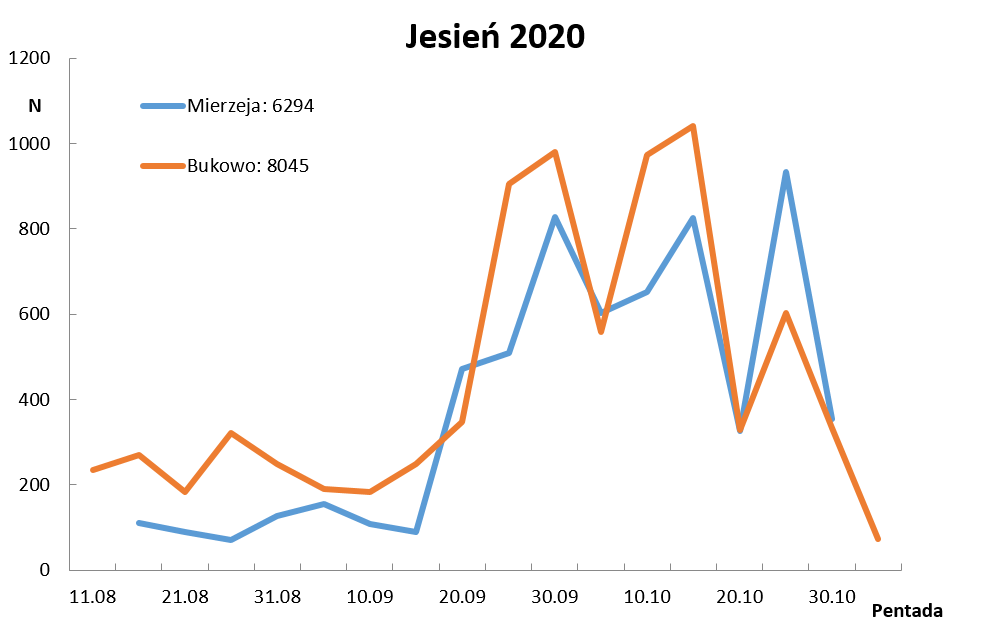The total number of recorded species was 103. Most of them were common European Passerines, ringed at Operation Baltic every year, but we also ringed several species which are very rarely recorded at our stations. Among them was the Black-throated Loon Gavia arctca and the Wigeon Mareca penelope (both second for OB), as well as a rare wader species – the Great Snipe Gallinago media (fifth for OB). The true highlights of the season were two Red-flanked Bluetails Tarsiger cyanurus (one ringed at each station, fifth and sixth for OB) – for this Siberian-breeding species 2020 was the best year in Poland (6 records). Altogether 30 foreign recoveries were recorded (much less than in 2019), mostly from NE Europe (Lithuania, Russia, Estonia), but we also caught birds with rings from Czech Republic (Wren) and Spain (Song Thrush).
Our fieldwork was supported by 117 people, who took part in our studies. Among them were 10 foreigners, coming from UK, Ireland, France, the Netherlands, Denmark and Italy. We are very grateful to all the ringers and volunteers for their help and effort – thanks to them we were able to add another year to the 60-year unbroken monitoring data set, despite the difficult time of the pandemic.[/vc_column_text][/vc_column][/vc_row][vc_row type=”in_container” full_screen_row_position=”middle” scene_position=”center” text_color=”dark” text_align=”left” overlay_strength=”0.3″][vc_column column_padding=”no-extra-padding” column_padding_position=”all” background_color_opacity=”1″ background_hover_color_opacity=”1″ column_shadow=”none” width=”1/1″ tablet_text_alignment=”default” phone_text_alignment=”default” column_border_width=”none” column_border_style=”solid”]





